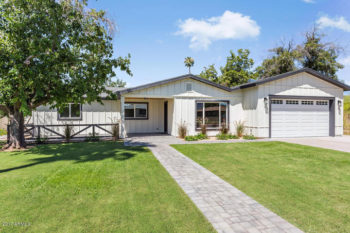Buying A Historic Home
 The metro Phoenix area is mixed with newer construction as well as some historic homes. Some of these historic homes are as old as the town itself. You can find them in the Old Town Scottsdale which is the original site of the region. Examples include the Pony Steak House, Noriega’s Home and Livery
The metro Phoenix area is mixed with newer construction as well as some historic homes. Some of these historic homes are as old as the town itself. You can find them in the Old Town Scottsdale which is the original site of the region. Examples include the Pony Steak House, Noriega’s Home and Livery
Stable, and the Lu Lu Belle Building which were built during the early and mid-twentieth century.There are certain factors that make a home to be considered as historic. Top on the list is the age of the home: a home needs to be at least 50 years old to be considered historic. The structural integrity of the building after those years is another factor. In addition, the background of the home plays an essential part in determining whether it is historic or not. That being said, there are various reasons why people consider picking a historic home instead of a contemporary one, and vice-versa.
The following are some of the advantages and disadvantages of buying a historic home:
Pros of buying a historic home
Lower property tax. Most governments give tax reliefs and incentives to owners of historic homes as a way of encouraging the building’s preservation.
An opportunity to better understand the underlying history. Every historical home has a rich historical background and owning them gives you a chance to learn more about their history.
Living in a historic building gives you an opportunity to discover the past of the building as well as the past of its former owners.
Elegance and beauty. Most historic homes are more elegant than contemporary ones. They have a unique design that sets them apart from others.
A chance to contribute to history. Most historic homes are preserved by the city and form an important part of the community. Being the owner of a historic home affords you the privilege to contribute to the development of that community by helping to preserve the home.
Good future value. If you are able to maintain a historic home, it may appreciate in financial value later in the future. This means that you can sell it for far more than what you bought it for.
Cons of buying a historic home
You may have to spend more in order to renovate it. As a rule of thumb, aged houses cost more to renovate and maintain than newer homes. In addition, the insurance for the home may not be cheap. Thus, in the long run, you might have to spend more on renovations and maintenance than what you spent on buying the home.
You may have to work more to renovate and preserve it. Historic homes are at least half a century old, meaning that most parts of the home need some repairs, especially if the former owners lacked a good maintenance culture. Besides the cost that you’ll incur, you need a lot of time and energy to get things back in shape.
Historic homes come with their restrictions. This may be the biggest disadvantage of owning a historic home. Historic homes are protected by strict state laws in order to keep them preserved and as such may limit the freedom of the owner in making changes to the home.
Possible undesirable surprises. You never know what can arise from a historic home as it has gone through many years of ownership. Some of the discoveries you’ll make in the course of living in a historic home may not be positive, so, watch out for them.




